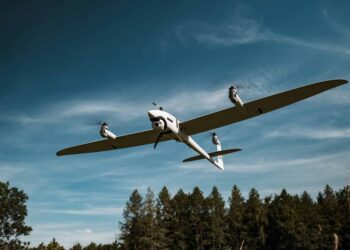AviationNow,
Australia's top planners began with the search for an airborne radar that could pick out very small targets at great distances. But that vision has made a quantum leap into the esoteric world of network-centric warfare with development of the Wedgetail aircraft.
Dubbed an airborne early warning and control aircraft (AEW&C), the name camouflages much more. As it's fielded in the next couple of years, the Boeing 737-based platform will become the hub of net-centric operations and conduct a wide range of active and passive surveillance.
Moreover, it will form one leg of a triad–along with UAVs carrying ground moving target indicators (GMTIs) and signals intelligence payloads–that can organize a battlespace and select key targets for bombing or nonkinetic attack.
With additional software modifications, the crucial multifunction electronically scanned array (MESA) radar could conceivably add a number of next-generation capabilities, including weapons effects, jamming and information warfare.
“If you look at what is happening with multi-aperture arrays even on the Joint Strike Fighter, that one array can be used for electronic warfare and communications and radar,” says Air Vice Marshal (ret.) Norman Gray, deputy CEO of Australia's Defense Materiel Organization. “That sort of technology is already coming. But our [initial] focus on Wedgetail is to see as far and as small things as we possibly can.”
That includes surveillance over a broad segment of the electromagnetic spectrum. “So we had to have [an aircraft] that would look for anything in the environment and not just actively,” he says. “We put in a very good ESM [electronic surveillance measures] system.”
This presented problems, however. A powerful radar can limit the frequencies in which extremely sensitive receivers can operate. The Australian concept of operations will sometimes have the radar shutting down for optimized ESM reception.
To Read Full Article Click Here or Discuss Here









